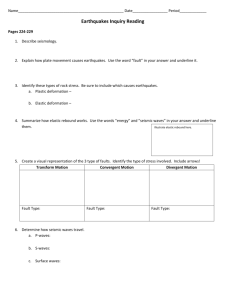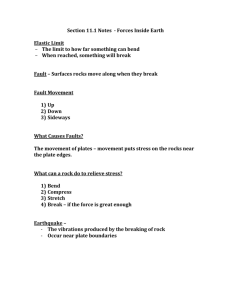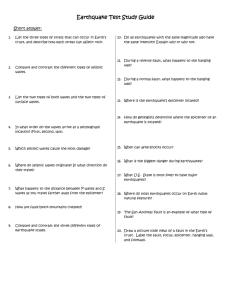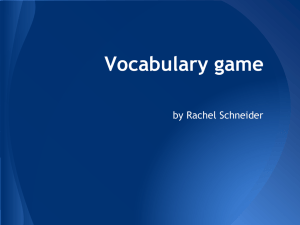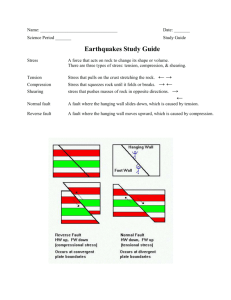Earthquake notes
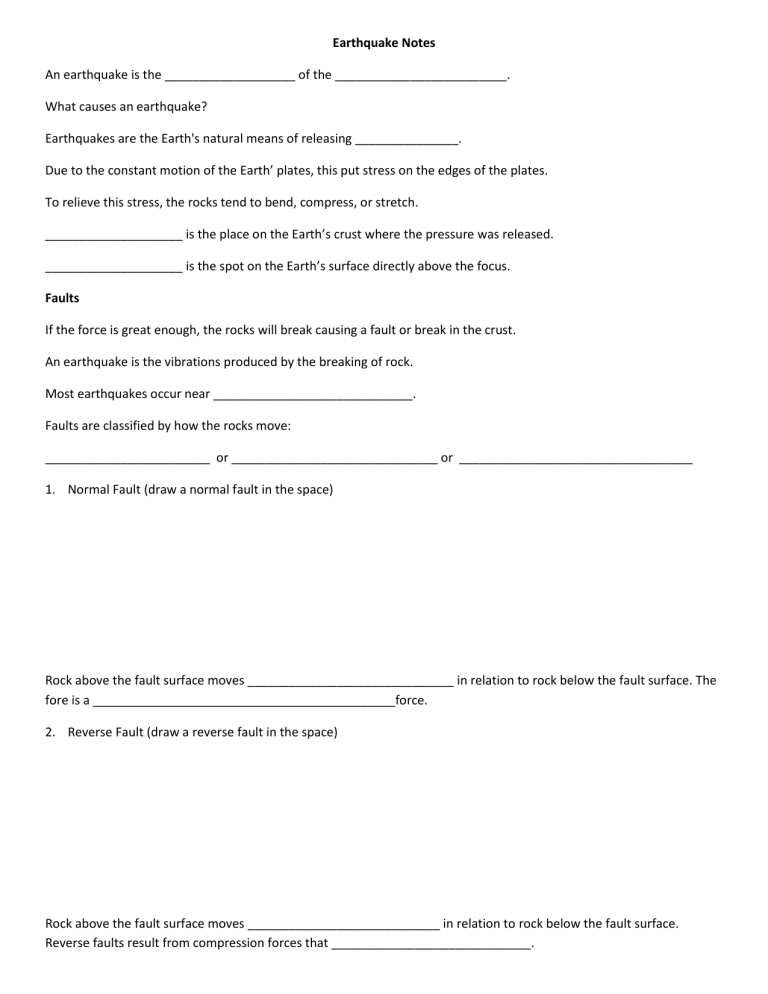
Earthquake Notes
An earthquake is the ___________________ of the _________________________.
What causes an earthquake?
Earthquakes are the Earth's natural means of releasing _______________.
Due to the constant motion of the Earth’ plates, this put stress on the edges of the plates.
To relieve this stress, the rocks tend to bend, compress, or stretch.
____________________ is the place on the Earth’s crust where the pressure was released.
____________________ is the spot on the Earth’s surface directly above the focus.
Faults
If the force is great enough, the rocks will break causing a fault or break in the crust.
An earthquake is the vibrations produced by the breaking of rock.
Most earthquakes occur near _____________________________.
Faults are classified by how the rocks move:
________________________ or ______________________________ or __________________________________
1.
Normal Fault (draw a normal fault in the space)
Rock above the fault surface moves ______________________________ in relation to rock below the fault surface. The fore is a ____________________________________________force.
2.
Reverse Fault (draw a reverse fault in the space)
Rock above the fault surface moves ____________________________ in relation to rock below the fault surface.
Reverse faults result from compression forces that _____________________________.
3.
Strike-slip Fault (draw a strike slip-slip fault in the space)
Rocks on either side of the fault are moving ________________without much upward or downward movement.
The San Andreas Fault is the boundary between two of Earth’s plates that are moving sideways past each other.
Earthquakes release energy in the form of waves.
_________________________________ are energy waves that travel outward from the source of the earthquake.
When earthquakes occur, three different types of seismic waves are produced.
1.
P Waves
Primary waves (P-waves) cause particles in rocks to move back and forth in the same direction that the wave is traveling.
P-Waves are the ________________ waves and are felt first, usually as a bang or a thump.
2.
S Waves
Secondary waves (S-waves) move through Earth by causing particles in rocks to move _________________________.
These waves are slower than P-Waves.
3.
Surface Waves
Surface waves cause most of the _______________________ resulting from earthquakes.
Surface waves (L-Waves) or land waves move rock particles in a backward, rolling motion and a side-to-side, swaying motion.
Wave Summary Chart Primary Secondary Surface
Movement
Material can travel through
Speed
Location
A __________________________________ is the instrument that measures seismic waves from earthquakes.
Seismographs register the waves and record the time that each arrived.

